 Server
Colocation
Server
Colocation
 CDN
Network
CDN
Network
 Linux Cloud
Hosting
Linux Cloud
Hosting
 VMware Public
Cloud
VMware Public
Cloud
 Multi-Cloud
Hosting
Multi-Cloud
Hosting
 Cloud
Server Hosting
Cloud
Server Hosting
 Kubernetes
Kubernetes
 API Gateway
API Gateway


A virtual machine (VM) is an abstraction of a physical computer that is created and runs on top of another computer. In the cloud computing paradigm, virtual machines help users perform multiple operating systems and applications on a single physical server with the help of virtualization tools. This feature is critical to the cloud infrastructure since it facilitates an elastic nature, resource efficiency, and adaptability.
Virtualization is the process that helps combine in the form of virtual appearances actual assets such as servers, storage, networks, etc. This is done with the help of another software layer called Hypervisor, which divides the physical resources between the virtual machines. The Hypervisor allows multiple virtual machines to run on a single physical server, where each virtual machine has its own operating system and software applications built on top; all these utilize the servers’ hardware.
When it comes to hypervisors, they are of two general types and these include:
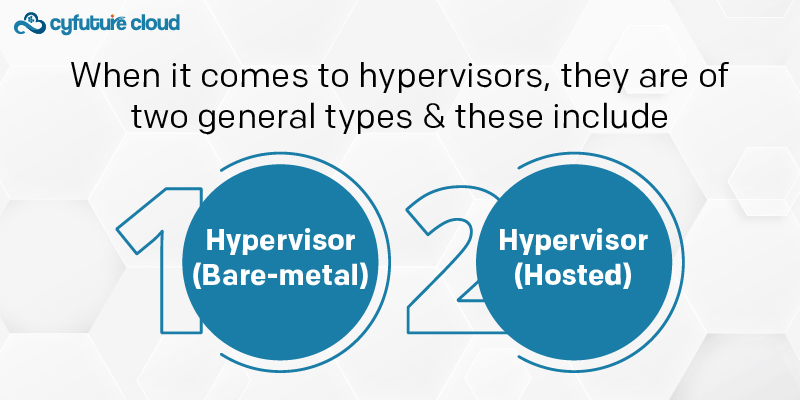
Type 1 Hypervisor (Bare-metal): Bare-metal Type 1 Hypervisor directly operates on physical hardware, overseeing VMs without requiring a host OS. Some examples are VMware ESXi and Microsoft Hyper-V.
Type 2 Hypervisor (Hosted): This Hypervisor operates on a standard operating system, depending on the host OS to handle the hardware. Some instances are Oracle VirtualBox and VMware Workstation.
A virtual machine is comprised of various essential parts:
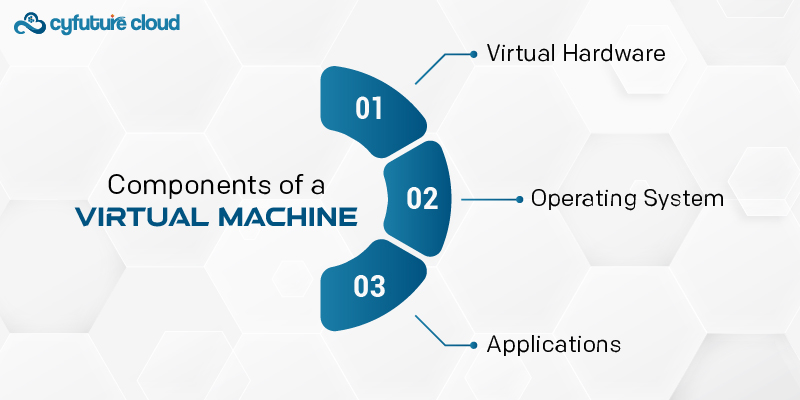
Virtual Hardware: The hardware of each virtual machine consists of its virtual components, including its virtual CPU, memory, storage media, and network adapters. This virtual hardware is represented as files on the host machine.
Operating System: VMs can run various operating systems independently of the host OS. This enables different environments to exist together on one physical server.
Applications: Uses can download and execute applications within the virtual machine, similar to how they would on a computer.
Virtual machines offer numerous advantages, mainly when deployed in cloud environments:
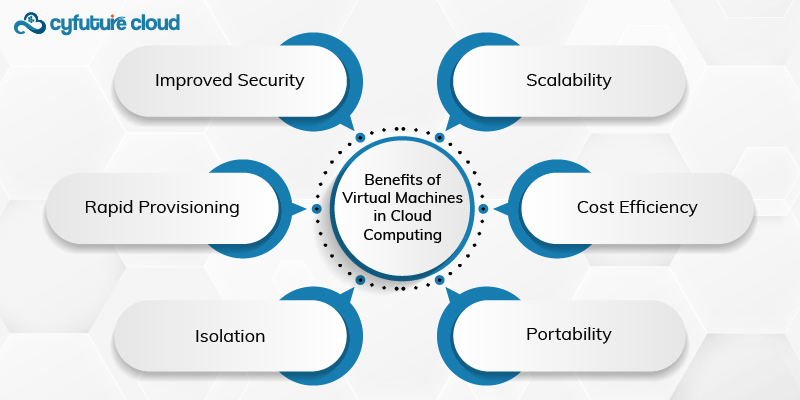
Scalability: The capacity of cloud virtual machines can be increased or decreased quickly in response to requirements. Organizations can easily set up more virtual machines to handle higher workloads without purchasing more physical equipment.
Cost Efficiency: Running several virtual machines on one physical server allows organizations to make the most of resources and lower purchasing, upkeep, and power usage expenses.
Portability: It is easy to transfer VMs between various physical servers or cloud environments. This mobility makes disaster recovery, application migration, and load balancing easier.
Isolation: Every VM functions separately, so problems in one VM do not impact the others. This improves security and stability for safer testing and development environments.
Rapid Provisioning: Quickly creating, cloning, or destroying VMs allows for fast deployment of applications and services, known as Rapid Provisioning. Businesses require agility to adapt quickly to shifts in market conditions.
Improved Security: By implementing tailored security features, VMs enable organizations to establish safe testing environments and handle confidential data without jeopardizing the host system.
Virtual machines are utilized in various scenarios within cloud computing:
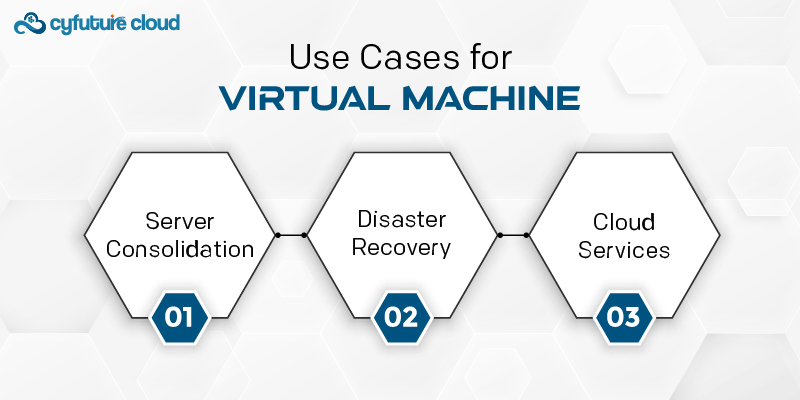
Creation and testing: Application developers can create one or more virtual computers specifically for testing the application on different operating systems, while the latter might not be feasible to have physically.
Server Consolidation: It entails packaging many raw physical servers into fewer machines by having more than one virtual machine running in each. It assists in the reduction of hardware costs and operations for beneficial corporations.
Disaster recovery: This is a process of copying and archiving the VMs at different sites to make quick recovery possible in the case of hardware malfunction or calamities.
Cloud Services: Most cloud providers, including AWS, Google Cloud, and Microsoft Azure, offer Virtual Machines as part of their IaaS products, where a company can cheaply rent IT infrastructure resources and be charged for what they consume.
Although virtual machines have many benefits, some obstacles must be taken into account:
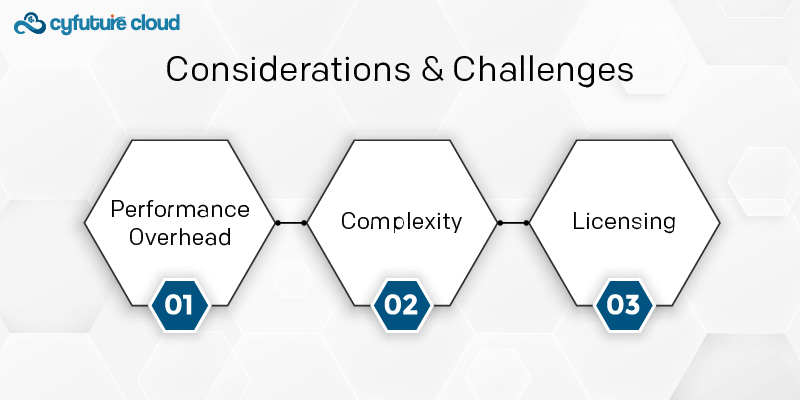
Performance Overhead: Performance degradation can occur when multiple VMs run on one server without enough resources, affecting overall performance. Effective capacity planning is crucial.
Complexity: Challenges come in when there is a need to work with complicated issues such as networks, security, and sharing of resources within a virtualized environment.
Licensing: Businesses must observe the licensing terms when using multiple operating systems and applications in virtual machines.
Virtual machines are essential in cloud computing since they enable the organization of resources, scalability, and flexibility. On the eve of companies’ steady blending of cloud technologies into production, it becomes vital to understand how VMs work and what benefits they provide for enhancing IT environments. Using the capabilities of VMs can help businesses increase operational efficiency, cut costs, and better handle changing demands in the digital environment.

Let’s talk about the future, and make it happen!
By continuing to use and navigate this website, you are agreeing to the use of cookies.
Find out more


